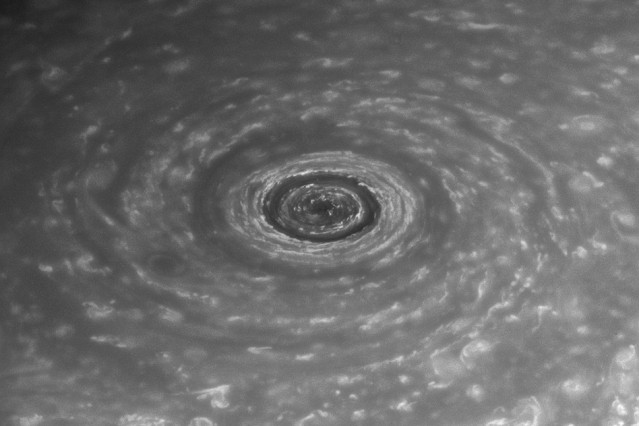Scientists have been observing mysterious "hotspots" found on Saturn's poles where they were later revealed as immense cyclones, each measuring as big as the Earth.
Simulations that are based on observations from NASA's Cassini spacecraft that has been orbiting the gas giant reveal that there are actually thunderstorms occurring in the atmosphere that could be causing these giant polar cyclones.
MIT's atmospheric scientists have developed a planetary model of Saturn that produces simulations of multiple thunderstorm impacts around the gas planet for this new study.
Researchers discovered that these small thunderstorms uses a process called beta drift that works by pulling air towards the polar regions where these thunderstorms gain atmospheric energy that results in more powerful and larger polar cyclones.
According to Morgan O'Neill of the Department of Earth, Atmospheric and Planetary Sciences (EAPS) of MIT, this process shows that smaller thunderstorms that are fast and plenty can gain more angular momentum on the pole itself that it can ultimately result to a wild and strong cyclone.
Researchers also found out that a cyclone forms depending on the size of an average thunderstorm that is relative to the size of the overall planet and how much atmospheric energy is generated by the storm.
With these factors taken into account, the team also studied Neptune and predicted similar polar hotspots that can generate transient polar cyclones while Jupiter on the other hand, would not produce any.
These new findings can also provide better insight for scientists when it comes to deciphering large scale atmospheric events that are occurring on distant exoplanets.
O'Neill also adds that this particular model used by the team can be pivotal in measuring atmospheric conditions found in planets that are beyond the solar system. For example, if scientists find a cyclone similar to a hotspot on an exoplanet, this will be crucial in predicting its overall weather and atmospheric conditions.
This study is published in the journal, Nature Geoscience.



























